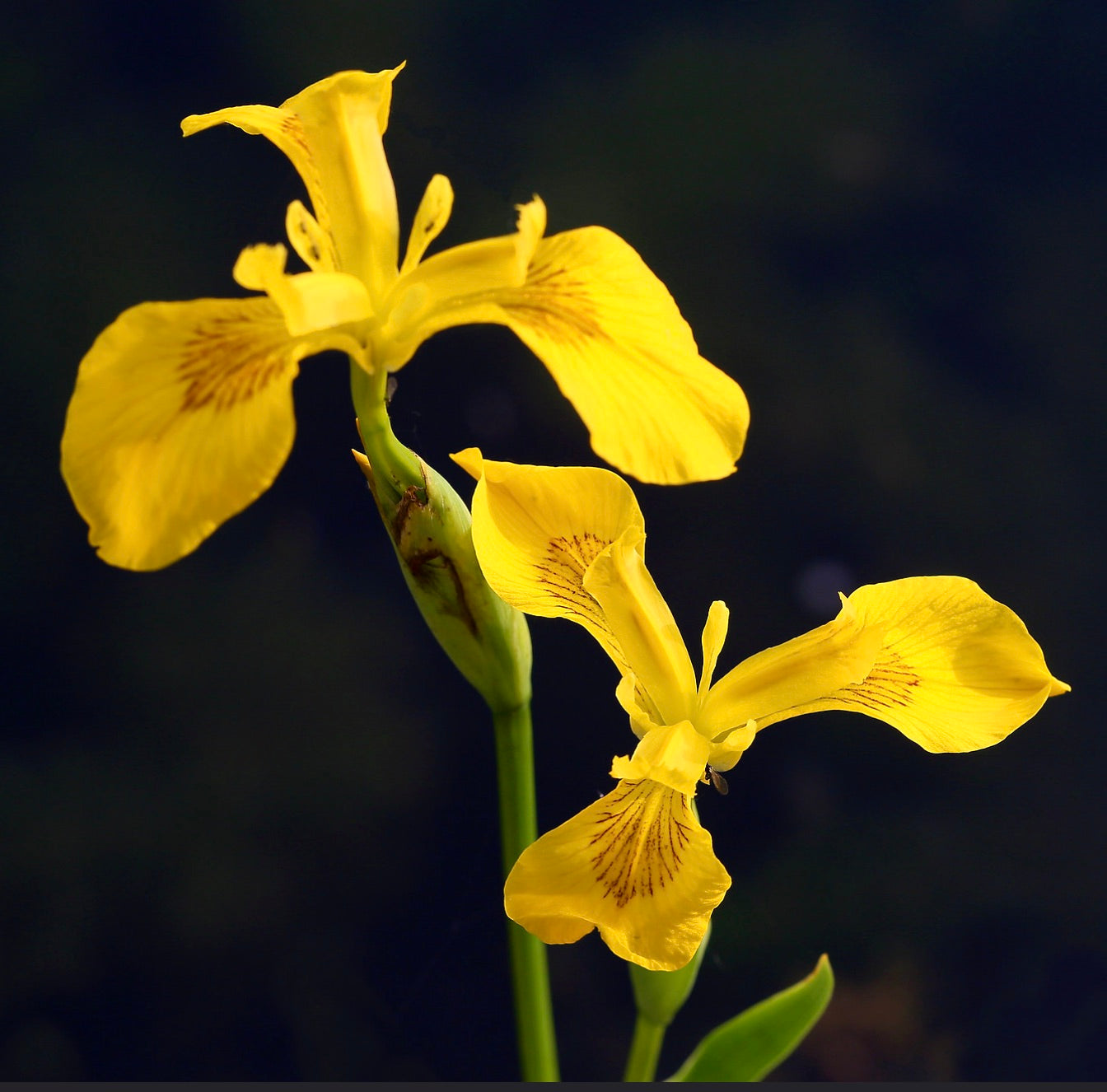- Catalogue Plants
Iris pseudacorus 5-10cm
Iris pseudacorus 5-10cm
Couldn't load pickup availability
Plant Description
Iris pseudacorus, commonly known as Yellow Flag Iris, is a perennial wetland plant native to Europe, Asia, and North Africa. This striking member of the Iridaceae family is known for its distinctive yellow flowers and sword-shaped leaves. Yellow Flag Iris typically grows to a height of 60-150 centimeters (2-5 feet) and features long, slender, arching leaves that can reach lengths of up to 90 centimeters (35 inches). The leaves are bright green and provide an attractive backdrop for the plant's striking flowers. In late spring to early summer, Yellow Flag Iris produces vibrant yellow flowers with six petals, each adorned with delicate brown or purple markings. These blooms are attractive to pollinators like bees and butterflies. This iris species is often found in wetland habitats, along the margins of ponds, streams, and marshes, where it thrives in moist to saturated soils.
Cultivation:
-
Climate: Yellow Flag Iris is well-suited to temperate climates and is adapted to wetland conditions. It thrives in areas with consistently moist or wet soils.
-
Sunlight: Plant your Iris pseudacorus in a location that receives full sun to partial shade. While it can tolerate some shade, it blooms best in areas with ample sunlight.
-
Soil: Provide consistently moist to wet, well-draining soil. Yellow Flag Iris is often found in waterlogged conditions and can adapt to a variety of soil types, including clay and loam.
-
Watering: Ensure that the soil remains consistently moist or waterlogged, especially during the growing season. Yellow Flag Iris is well-suited to aquatic and riparian settings.
-
Mulching: Apply a layer of organic mulch around the base of the plant to retain soil moisture and suppress weeds. Keep the mulch away from the plant's crown to prevent rot.
-
Fertilization: Yellow Flag Iris does not typically require heavy fertilization. In natural wetland habitats, it obtains nutrients from the surrounding environment. Avoid excessive fertilization.
-
Pruning: Prune your Iris pseudacorus as needed to remove dead or yellowing leaves and spent flower stalks. Pruning is generally minimal for this plant.
-
Pests and Diseases: This iris species is relatively resistant to pests and diseases. However, watch for issues like aphids or slugs, and address them if they appear.
-
Spacing: When planting multiple Yellow Flag Iris plants, space them at least 30-60 centimeters (12-24 inches) apart to allow for their mature size and to create an attractive grouping.
-
Propagation: You can propagate Iris pseudacorus by division. Divide established clumps in early spring or late summer, and plant the divisions in consistently moist soil.
Yellow Flag Iris, with its striking yellow flowers and affinity for wetland environments, can add beauty and vibrancy to your water garden or any area with consistently moist soil. Its adaptability to such conditions makes it an excellent choice for naturalizing wetland habitats or creating a striking water feature in your landscape. With proper care and attention to its specific requirements, it can thrive and enhance the aesthetics of your outdoor space.
Botanical family: Iridoideae
Botanical genus: Iris
Botanical species: Iris pseudacorus
SKU:BA-0755-S
Cultivation
Cultivation
Info and Disclaimers
Info and Disclaimers
Plant Height: 5-10cm
Plant Diameter:
Pot Size:
Grafted/Not Grafted:
Disclaimer: Be aware that most plants change across seasons. If present foliage, could have been fallen or change in its color.


